The history of grouse shooting in the UK is tangled up with the history of the railway network. Before the 1800s, Lagopus lagopus scotica (red grouse, which are only found in the UK) may have been shot by a landowner now and then for the pot, but it is likely that pretty much no-one else was eating grouse because nobody in rural 18th Century Britain but the toffs could afford a gun. Hundreds of years of monarchic repression had ground the peasantry into the dirt, and millions of acres of Scotland had pretty much nothing going on in it courtesy of James II of England.
Enter the Victorians and their new-fangled railways. All of a sudden, it was possible to ship freshly shot grouse to London, and it was also possible to ship Londoners to Caithness to shoot the birds. This is why grouse has always been seen as the preserve of the wealthy – only the wealthy had the land, and when the railways opened up the land, only the wealthy were invited to shoot it. The truth is grouse is very cheap. One bird can be had for under £3 from WH Frost of Chorlton, England.
Along the way in the story of the grouse, the landowners worked out that one grouse will eat about 50g or heather a day, and that they prefer to eat the young shoots, while nesting in the older, bushier stuff. This discovery led to the practice of burning the grouse moors in strips. The burnt areas regenerate with fresh shoots, while the grouse hide in the unburnt bits. The strips are about 2 metres wide because grouse don’t like moving very far for their food.
For what it is worth, I have no truck with the ‘environmentalists’ who want to ban driven grouse shooting. Sixty percent of England’s ‘sites of special scientific interest’ are on grouse moors, and that is precisely because the moors are carefully managed for diversity. I understand that there is evidence of predators being killed to protect the grouse, but that needs to be dealt with a less heavy hand than a ban on shooting.
The UK grouse shooting season runs from 12 August until 10 December, with early stoppage common in lean years. Following chefs on Twitter is very entertaining on 12 August, because there is a tremendous kerfuffle as the London kitchens gear up to dress, cook and serve (and photograph for Instagram!) the first of the annual bag of red grouse. As someone who has occasionally shot and prepared his own pheasant, I am a little perplexed by this because most game birds benefit from hanging whole, with the time needed dependent on how cold it is in the shed. Having a grouse on my plate on 13 August might not make for the best eating, and yet this pantomime continues every year. My grouse were ordered from The Blackface Meat Company in Dumfries, Scotland, but I have recently identified a local supplier who can do them for less money.
If there was ever a classic recipe for grouse, it would probably be to wrap the bird in bacon, roast it whole, and serve it on a nice toast spread with game liver pate. Freshly fried game chips are cast about on the on the side, and some token watercress is added for colour. The bacon is needed to baste the grouse breasts, because the birds have virtually no fat on them. The meat is a rich red, tastes like turbocharged pigeon, and is a fabulous treat in the season.
Last year, I cooked the traditional method above, but this year I have decided to do a stew. Inspiration has come from Tom Kitchin, the world’s youngest recipient of a Michelin star, and protege of Alain Ducasse and Pierre Koffmann, and who this year published his book Meat and Game. In the book, Kitchin describes a short series of grouse recipes, among which is one for a grouse stew with dumplings. He describes it as an ‘autumn stew,’ owing to the presence of chestnuts and pumpkin. As I am writing this, neither of those are in season, and it does not do to force the seasons by buying from Israel etc.
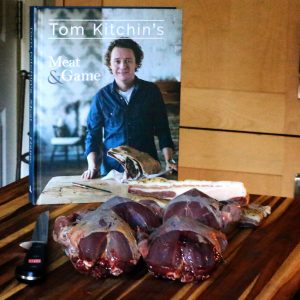
Tom Kitchin’s book – available from all good Amazons
However, directly opposite the house, there is a small bramble patch that seems to have found its niche, as it is producing kilos of ripe blackberries. They started ripening in the last days of August, and now, in the second week of September, the spiny branches are bowing under the weight of thousands of juice-laden berries. Obviously, I have to cook with those.
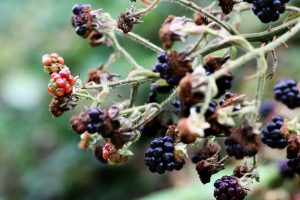
Brambles growing over the road from the Nosey Cave
As the the method of stewing, I was once very fortunate to be bought a gift of a course at the now defunct Tideswell School of Food. The school, which was championed by property developer Sarah Beeny, ran regular courses with chefs of all types, with the aim of promoting Tideswell as a local centre for foodies. Before it closed, I was lucky enough to get a three-course meal lesson from Rupert Rowley, head chef at the Michelin-starred Fischer’s at Baslow Hall. Among the things he taught us to cook was a braised beef cheek. As we cooked along with him, he broke down the basic principles of casseroling anything, and it is a lesson I have never forgot. When you look at a lot of recipes (like Tom Kitchin’s, but also in simple stuff like Bolognese sauce and coq au vin), the same basic process will keep you straight: Melt fat, brown meat, set meat aside, soften veg, add flour (and/or spices if it’s a curry), deglaze, add liquid (often 50:50 alcohol and stock), add browned meat back, add aromatics, braise forever, thicken, and add something sweet to offset the alcohol. At the School, we used Guinness and treacle to generate the sour and sweet. In the grouse recipe, I am using stout and homemade bramble jam, and I urge you to experiment.
So here is my version of Tom Kitchen’s recipe for grouse stew and dumplings, with some food-fu from Rupert Rowley, and adapted to the dying days of summer. Like any stew, this is best done the day before and refrigerated. You also need time to make the grouse stock because I would hazard that pretty much no domestic chef has a stash of grouse stock hanging around in the freezer (you will have some left after making this though).
Grouse stew with dumplings and blackberries
Ingredients
- Four grouse, dressed.
- For the stock:
- 1 onion, 1 carrot and 1 stick of celery halved to split
- 2 sprigs of thyme
- 2 bay leaves
- 6 black peppercorns
- 6 juniper berries, crushed
- For the stew:
- 75g plain flour, seasoned
- 2 tbsp sunflower oil
- 100g bacon lardons
- 1 onion, finely chopped
- 1 carrot, finely diced
- 1 celery stick, finely diced
- 4 tbsp whisky
- 150g button mushrooms
- 1 bouquet garni (thyme, parsley stalks and bay tied together with string)
- 500ml stout (eg. Guinness, not sweet like Mackeson)
- 2–3 tbsp blackberry jam or jelly
- 1 handful of fresh blackberries
- Sea salt and freshly-ground black pepper
- For the dumplings:
- 125g plain flour
- Half a tbsp of baking powder
- Large pinch of fine table salt
- 60g beef suet pellets
- 60g butternut squash, very finely diced
Instructions
Remove the legs (and wings if present) from the birds, and then carve off the breasts. It can help to go through the hassle of dissecting the wishbone out so that the knife doesn't track along it and miss some of the meat close to the neck. Cut the breasts into quarters and reserve.
Put the carcasses and legs in a stock pot with the halved vegetables, peppercorns, thyme, bay and juniper berries. Add 5 litres of water.
Bring the stock to a boil, skim off any scum and simmer gently until reduced to about a third volume (about 40 mins). Sieve the stock through a chinois and reserve the liquid.
Preheat the oven to 150˚C.
Dredge the grouse breast pieces in the seasoned flour until coated.
Heat the oil in a cast-iron oven and heat-proof casserole. Lower the heat and fry the grouse breasts pieces until browned. Remove the meat with a slotted spoon and set aside.
Add the bacon to the pot, and fry to release the fat and brown the meat. Add all the finely chopped vegetables, and fry for a bit longer until the onions are translucent. Deglaze the pan with the whisky and evaporate the alcohol off. Take a big sniff of Scotland from your developing stew.
Add the mushrooms, the browned grouse, and pour over equivalent amounts of grouse stock and stout until just covered. This may or may not use all the stout, and it will leave you with just under 2 litres of unused stock that you can portion and freeze for lord knows what. Add the bouquet garni.
Bring the stew up to a gentle simmer, cover and place in the oven for 2 hours. Once the 2 hours are up, everything will be better if you let the stew cool and refrigerate it overnight.
Warm the stew over a medium heat and taste it. You should be able to taste the bitterness of the stout. Add blackberry jam until that bitterness is just lessened but stop before you can taste sugar. It will take a little over 2 tablespoons of jam to achieve this. Finally, season with salt and pepper to taste.
With the stew warm, make and cook the dumplings. Sieve the salt, flour and baking powder into a large bowl and mix in the suet and squash. Slowly add water and mix vigorously until a you have a slightly sticky dough.
Flour your hands and roll the dough into dumplings about the size of a sprout. You ought to get about 12 of them.
Put the dumplings in the stew and continue to cook for 10 minutes until the dumplings have puffed up.
Put the blackberries in the stew, and serve. All this needs is a green vegetable like steamed broccoli on the side.

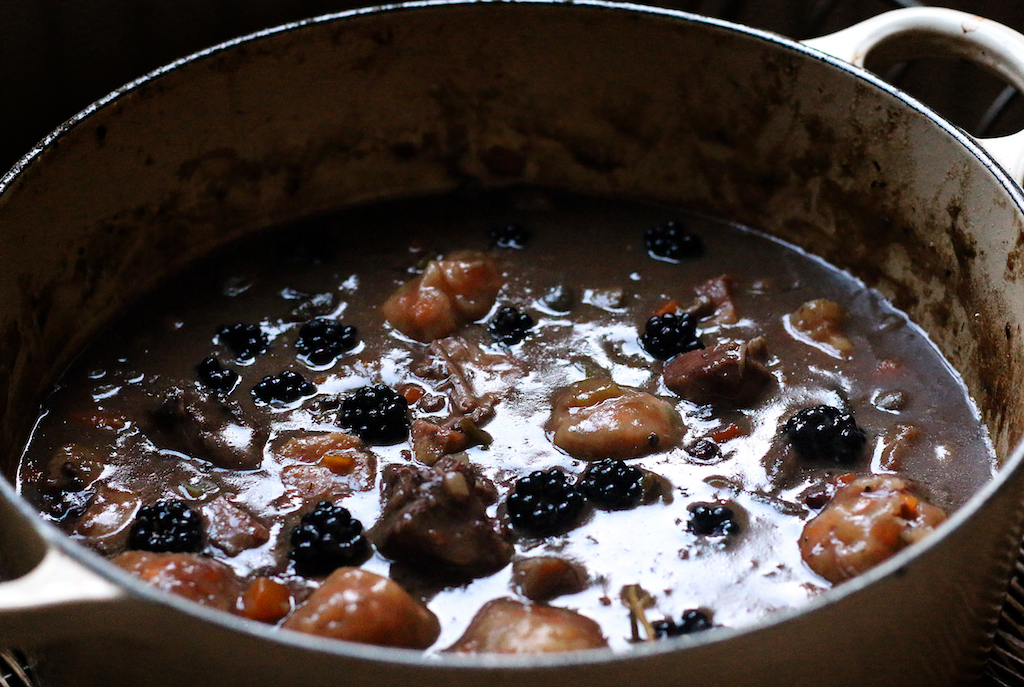

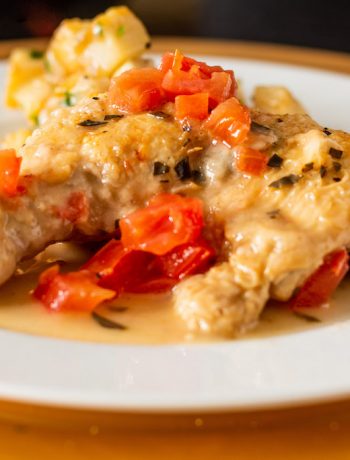
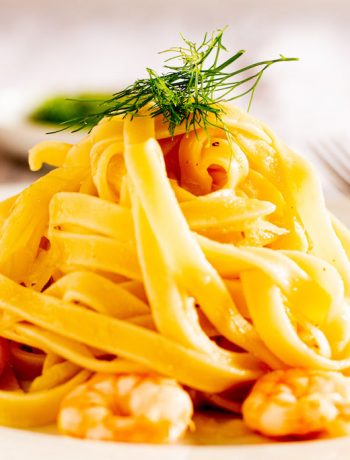
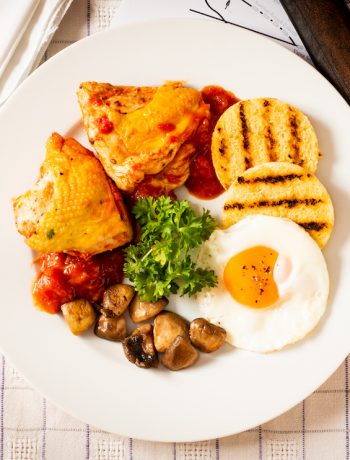
2 Comments
Claudia Ksionsek
23/11/2021 at 2:12 amHey Nosey Chef’s, I am really impressed with your recipe. I am in Canada, don’t have any grouse, but a lot of fresh hunted wild goose breasts. My question, can I do this recipe with my goose breast, instead of the grouse.? I even have my own homemade goose stock . I would really enjoy to make this for Christmas.
I will be thrilled if I could get an answer on this.
Cheers
Claudia
Nigel Eastmond
26/12/2021 at 10:56 amYou could, but I would be inclined to skin it. My worry is the amount of fat. Wild goose needs a long braise, unlike farmed goose.